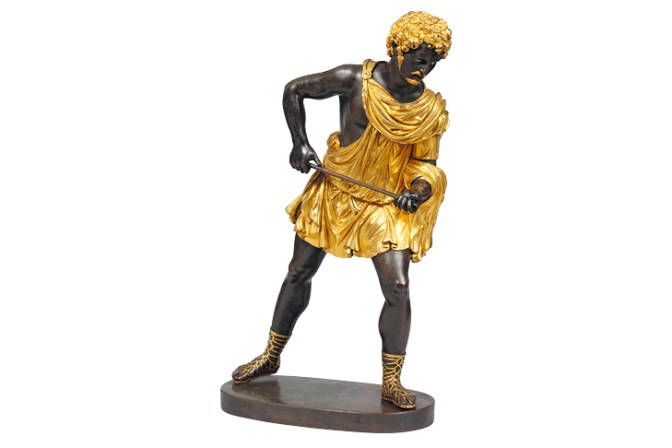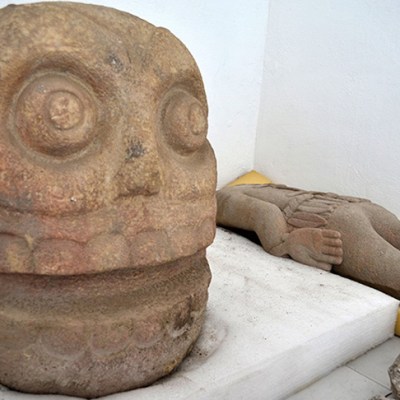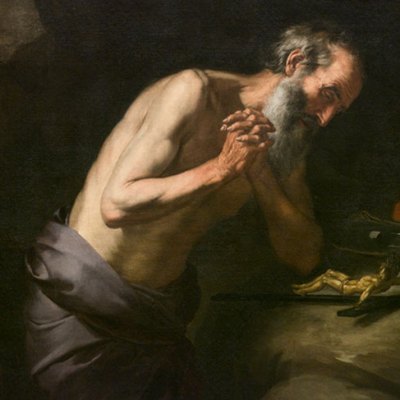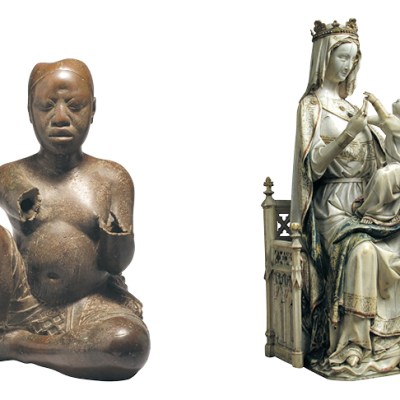One might say that staging an exhibition that focuses on marginalised histories is what museums and galleries have been engaged in for several years now; the recovery of something absent to create a provocative presence has become something of a convention. Such revisionist exhibitions expose the complexity of our relationships to the past and demonstrate that the stories that museums present, far from being stable and settled, are constantly being reframed in the light of current concerns. These approaches reflect the desire of museums to diversify their audiences, but they also challenge both museums and their visitors by asking searching questions with the potential to destabilise established narratives. It was with these notions in mind that I approached the Bowes Museum two years ago to ask if it would host an exhibition about what could be considered one of the most persistent taboos in current museum practice, the relationship between institutions and the art market.
‘SOLD! The Great British Antiques Story’, for which I am guest curator, concentrates on the history of antique dealing in Britain over the last 200 years. The dealer is central to the exhibition, given that this figure often personifies the contaminating forces of the art market. One only needs to think about how the art and antique dealer has often been represented in visual and literary culture – from Mr Puff, the duplicitous picture dealer in Samuel Foote’s satire Taste (1752), to characterisations of dealers in the novels of Balzac and, more recently, the ‘loveable rogue’ Lovejoy – to realise that the trope of the dealer as ‘problem’ has been a consistent theme in histories of the art trade. ‘SOLD!’ uses this focus to direct attention towards the question of why the art market, so fundamental to the history of museums and galleries, is so often concealed or marginalised in the museum. Indeed, the very title of the exhibition was devised as a provocation.
Meleager (c. 1490), ‘Antico’. Victoria and Albert Museum, London.

‘SOLD!’ counters this marginalisation by reframing iconic and familiar museum objects within an unfamiliar narrative, foregrounding their hidden histories as they circulated on the art market. The story of the discovery of the Meleager bronze by ‘Antico’, bought by the dealer Horace Baxter at an obscure auction in Kent for £16 and sold to the V&A in 1960, is a key example. The show aims to reinsert the role of the antique dealer into the biographies of museum objects and to highlight the part played by the too-often-unseen hand of the art market in the development of museum collections.
Having taught museum studies for the last decade at the University of Leeds, I found curating ‘SOLD!’ a hugely enriching experience. I learnt how complex and demanding the planning and design of an exhibition can be; my work as an academic is far more relaxed. It was enlightening and stimulating to work with colleagues from the professional museum world. There were challenges of course; there was often an absence of information on dealer provenance in museum object files, for example, certainly compared to the wealth of detail on collector provenance. There was also an initial resistance, a coyness perhaps, on the part of many museum professionals to discuss art market – that is, economic – value and an anxiety about making such detail a fundamental aspect of the exhibition’s narrative, as if the market somehow pollutes the essence of the art object. This perceived gulf between the art market and the museum is reinforced by description and taxonomies: the same objects described as ‘antiques’ outside the museum are designated ‘decorative art’ once inside museum walls.
This is understandable, but such apparent economic disinterest only reinforced my desire to ensure that the perceived dichotomy of the sacred space of the museum and the profane space of the market should be explored further. As Pierre Bourdieu writes, symbolic capital ‘is a kind of “economic” capital, denied, but recognised, and hence legitimate’.
I hope that ‘SOLD!’ will open further critical debate on these issues, and that such anxieties will ultimately recede as a focus on the narrative of the art market draws further attention to how entwined and mutually reinforcing the respective ecologies of the museum and the market really are.
‘SOLD! The Great British Antiques Story’ is at the Bowes Museum, Barnard Castle, until 5 May.
From the February 2019 issue of Apollo. Preview and subscribe here.


